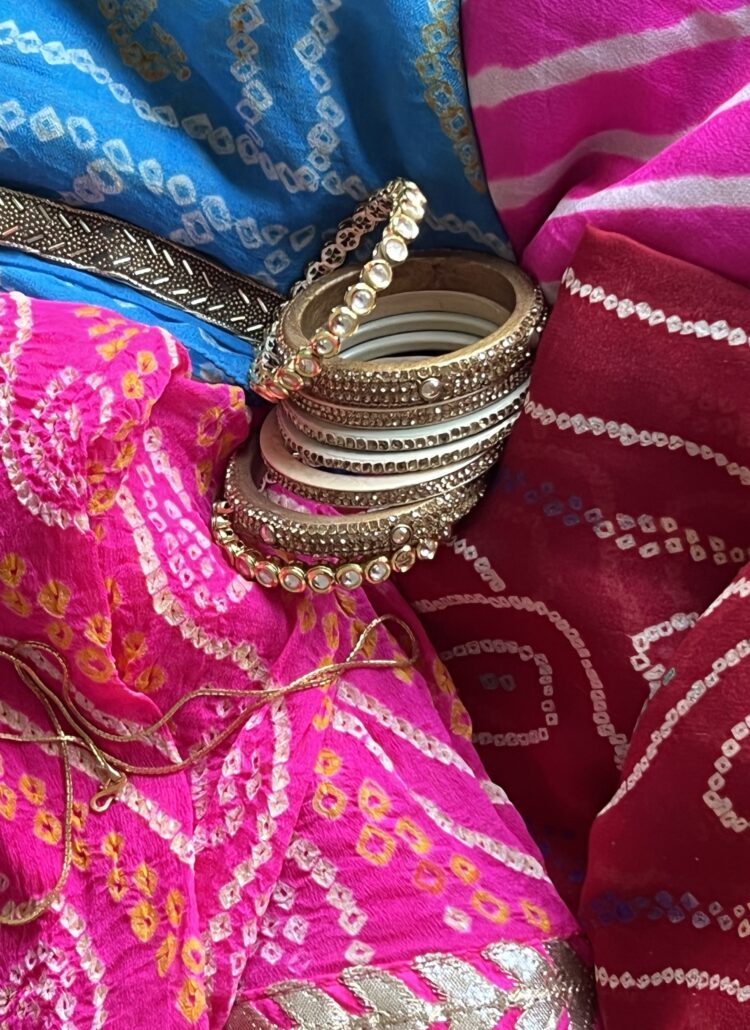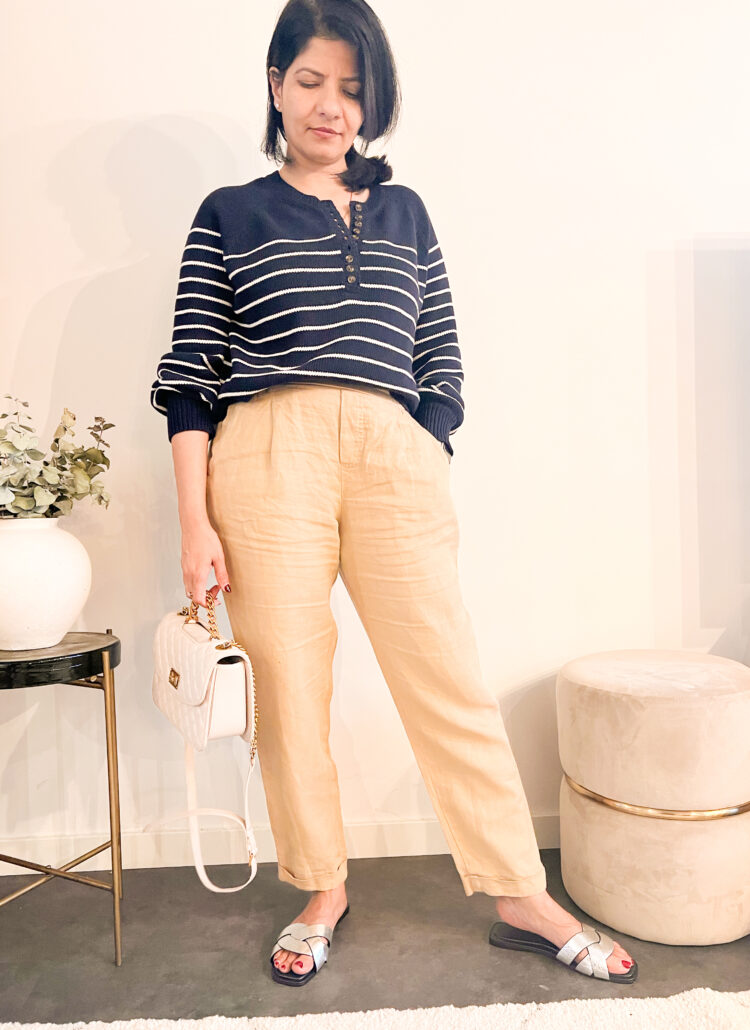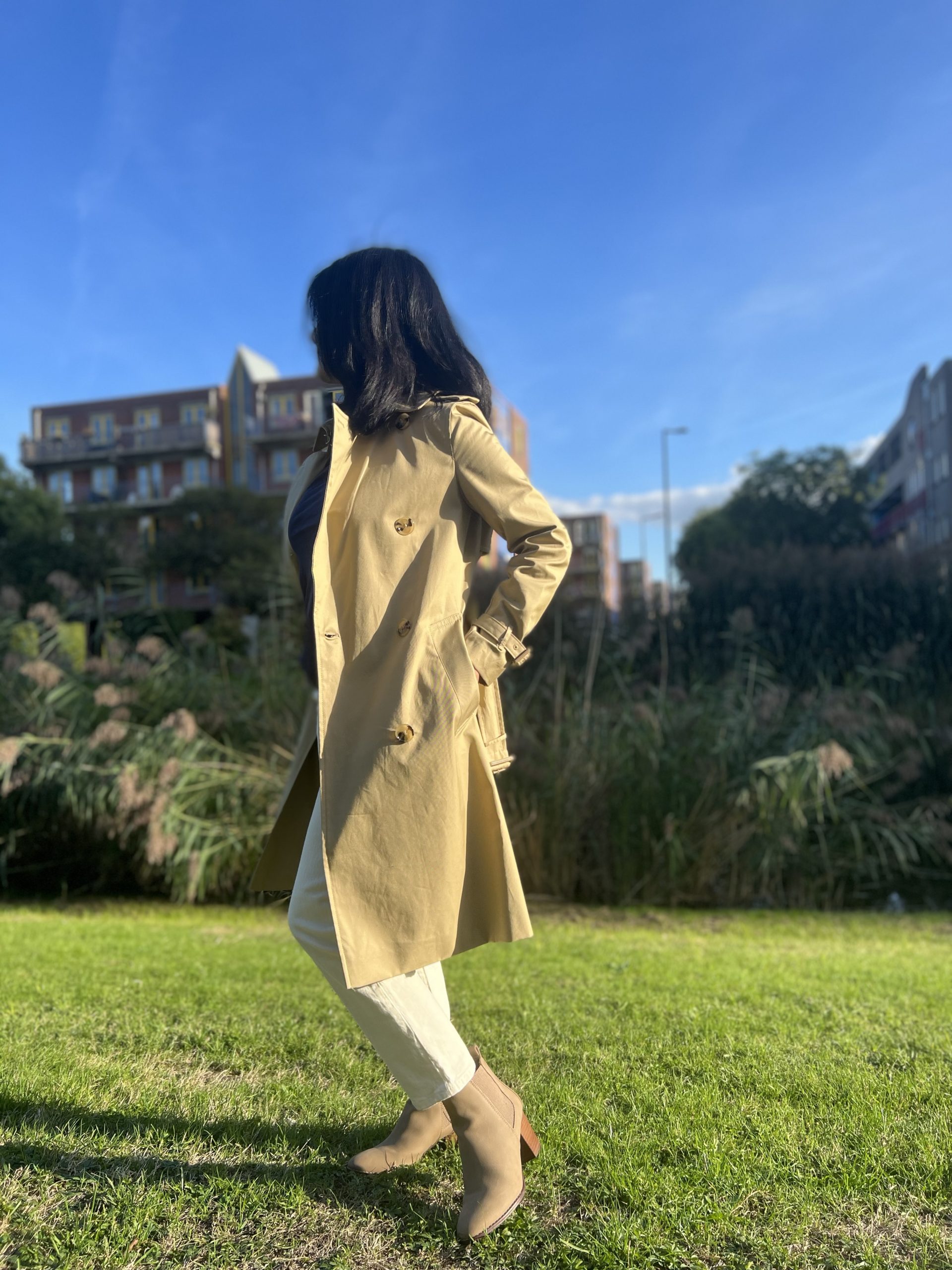Bandhej also widely known as Bandhani is one of my favourite handicraft styles of textiles in traditional Indian wear. I know it’s not for everyone. However, with Navratri festival going on and I’m a Rajasthani (Born and raised in the state of Rajasthan in India), so it is obvious, that I’m thinking of Bandhej . The artisans create intricate pattern with tiny dots and ties that showcases the tedious effort and craftsmanship. In the last decade, Bandhej has gained even more popularity, mainly due to the designer wear created by Sabyasachi and other famous designers. Off late we see all the high-end Indian designers follow suit. We all remember Alia Bhatt and Jhanvi Kapoor donned bandhej sarees and looked like princesses. Similar copies are now flooding the markets. I’ve always loved bandhej and was curious to find out all the info there is available about it.
History
I found that the earliest evidence of Bandhaej dates back to Indus valley civilisation that suggests that dyeing was done as early as 4000 B.C. Bandhej dots can also be seen in the 6th century paintings depicting the life of Buddha found on the walls of Caves at Ajanta. The term “bandhani” comes from Sanskrit word “Bandh” (to tie, to bind). It was believed that wearing Bandhej saree can bring good fortune to the bride.
Process
The art of Bandhej is a highly skilled process and finest variety of Bandhej is created in western India. Predominantly in the states of Rajasthan and Gujrat. In this technique the artisans pluck fabric with their fingernails and tie it tightly in knots with an impermeable thread in various designs and patterns. The more intricate the pattern, the tedious and time consuming the process becomes. A saree with an intricate pattern may have as many as 75,000 knots. Then they dip the fabric in various colours for hours and then dry it, to complete the dyeing process. Depending on the weather the dyeing process takes anywhere between 4 to 72 hours.
Fabric and colours

One of the originally used fabrics was cotton in mulmul (muslin). Over the centuries, the producers and artisans have experimented and innovated to apply the technique to other fabrics such as, loosely woven silk called georgette, banarasi silk, viscose and other variants of cotton too. When it comes to Bandhej, be prepared to be dazzled by bright colours. The most widely used colours are yellow, magenta, red, green and indigo as these were traditionally available as natural colours. These days we are able to see fabrics in a variety of other colours including pastel shades.
Popular styles of clothing and occasions
You can spot this tie and die technique in any form of clothing honestly, including western inspired shirts and trousers. However traditionally created and my favourite styles are Lehenga, Salwar suits, Safas (Turbans for men), Duppatas, and of course Sarees. Over the last couple of decades Bandhej has picked up popularity especially during the festive season. Since, this handicraft is also famous in Gujrat, it is “the style” worn in the Navratri season for Garba dance. Wedding season is glittered with more glamorous versions of Bandhej that are bedazzled with other handicraft works like, kundan work, gotapatti, zardozi embroidery etc. Wether it is a designer wear or the upcoming brands made more popular with social media, everyone is admiring the craftsmanship of this local Indian art form.
Cultural significance for special occasions and festivities
Although, the modern generation (including me :)) loves to wear many forms of Bandhej for any occasion, there are various styles and patterns that have significant meaning in the local culture in Rajasthan and Gujrat. For example, One of the most intricate patterned saree in the specific red colour (vermilion red) georgette fabric is called “Chundari” in Rajasthan. A girl wears this specific saree, for the first time, for her wedding ceremony (especially in the Marwari community). It is considered auspicious to wear this saree in any significant puja thereafter. Similarly a yellow and red mix specific pattern called “Peela” should be worn by a woman only after she has given birth to a child. Men wear a red coloured Safa (a specific turban) as a groom for their wedding ceremony.
Wash and Care
Since any bandhej fabric is usually a delicate one and handmade. One should be careful with the wash and care. For cotton fabrics, you can use a delicate setting in the washing machine, I recommend hand wash. Avoid tumble dry and should dry in shade. Colours can fade if exposed to direct sunlight. You should only dry-clean the more expensive fabrics like pure georgette and silk. You should also be careful to store clothes specially the pure silk and georgette ones in a cool dry place and folded with a layer of cotton or paper in between to avoid fabric with work tangle.
Bandhej patterened clothes look good for any occasion. You can use the simplest of fabrics in cotton for daily wear or with additional artwork or more luxurious fabrics for festive occasions and weddings. I love to wear bandhej any day of the year. Here are some of the outfits I have worn over the past couple of years.
Yellow bandhej saree in georgette fabric with gotapatti work for my Haldi ceremony
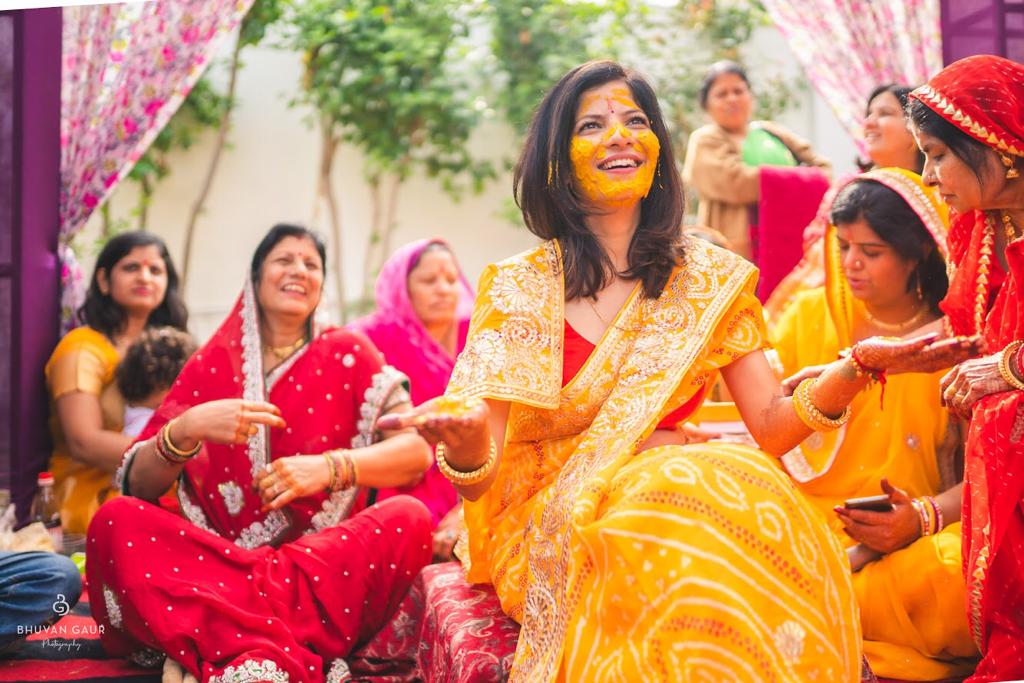
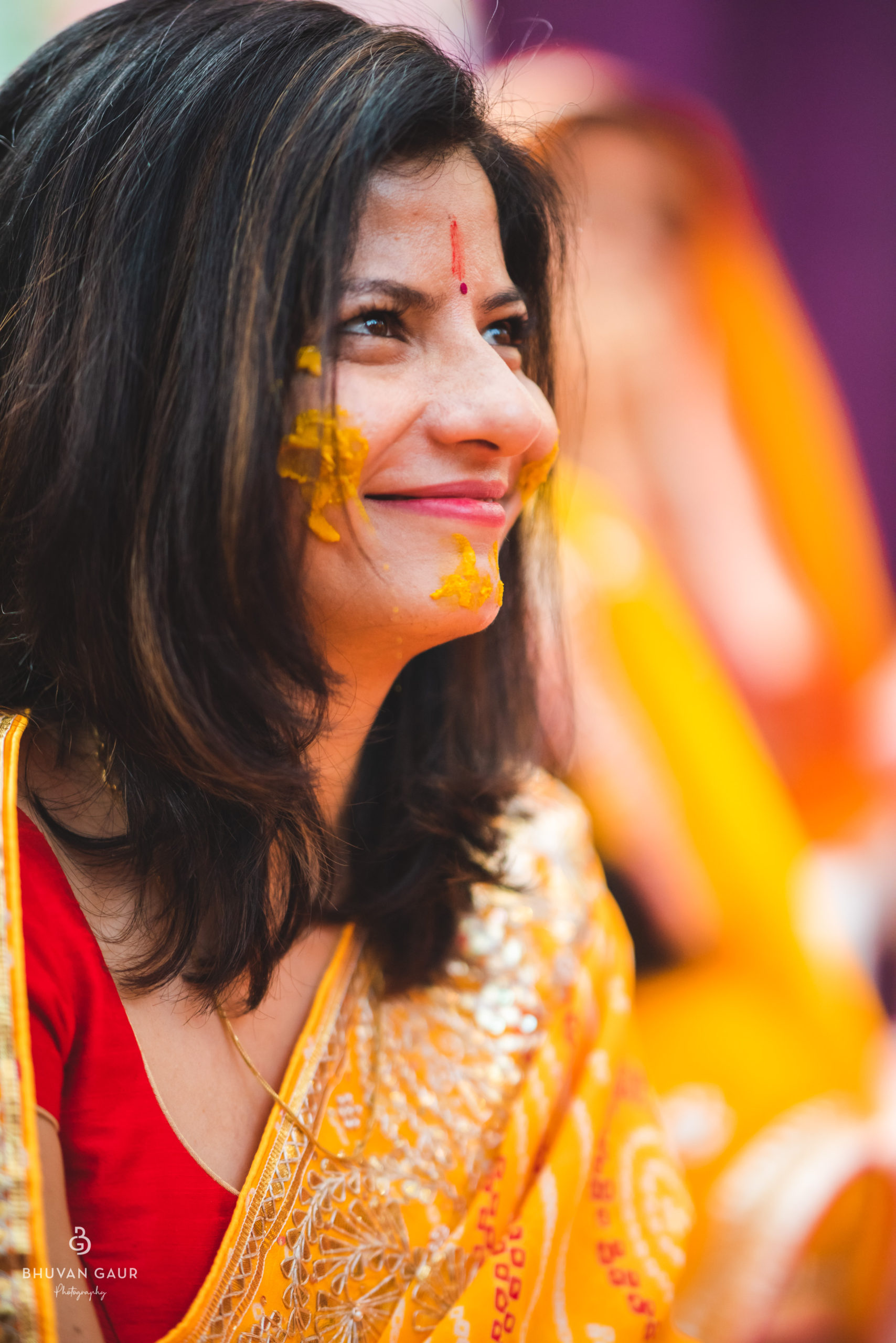
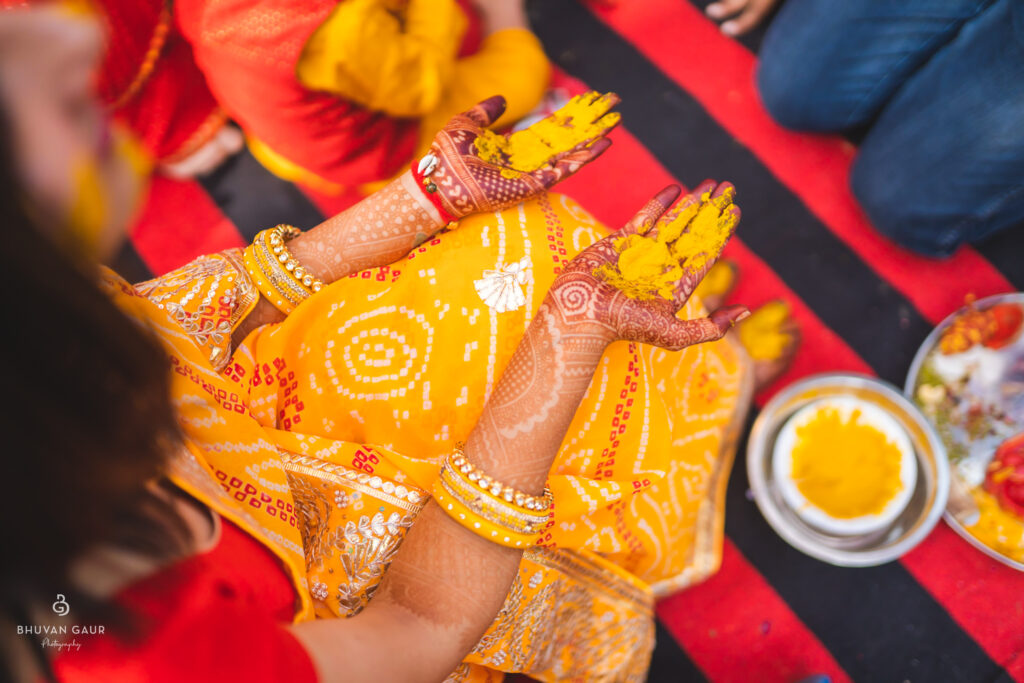
A multi coloured bandhej saree on silk fabric for a puja at home
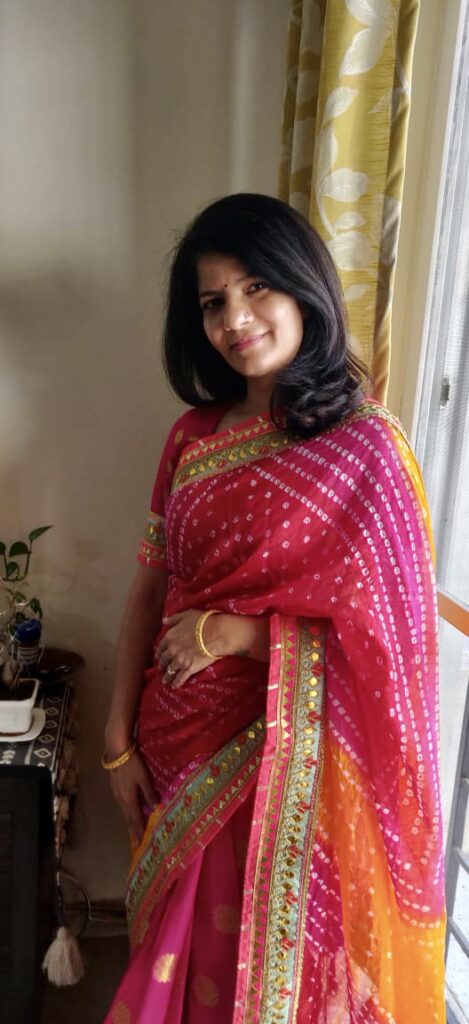
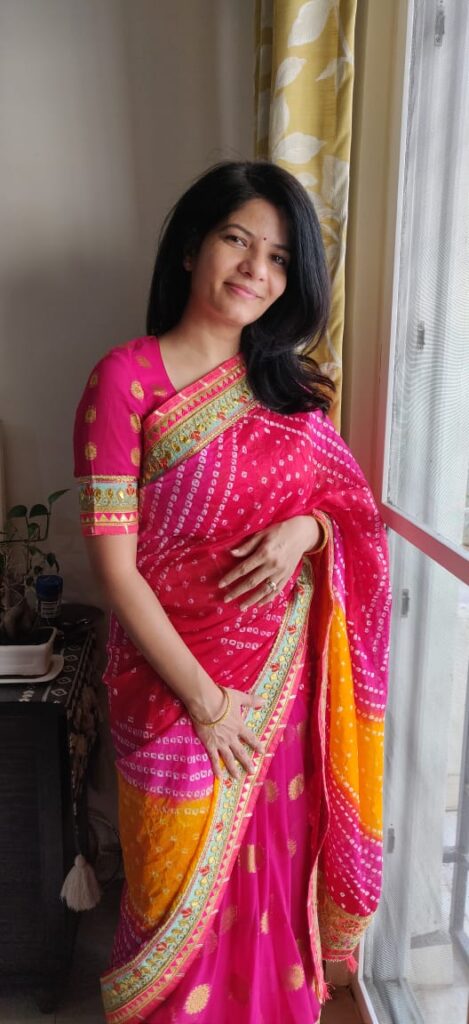
Green saree in two shades in georgette fabric
Couldn’t find a better photo in this saree.
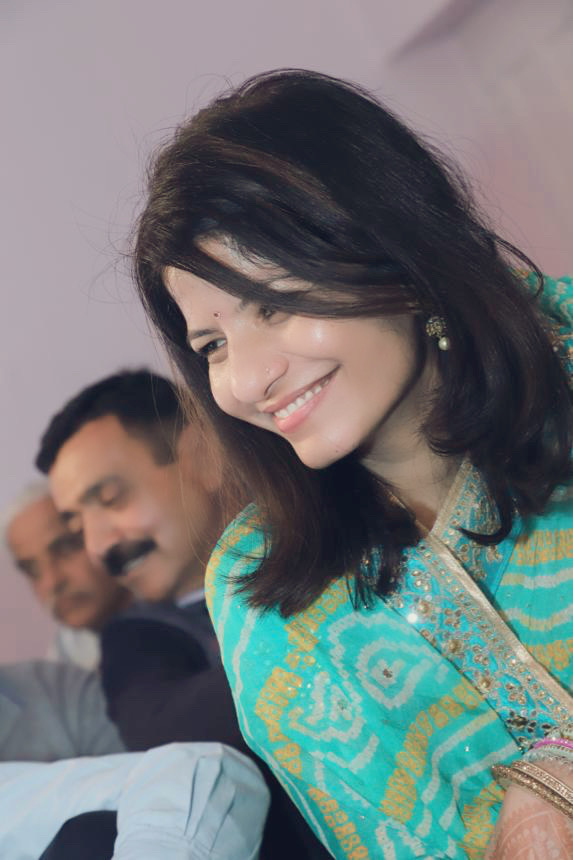
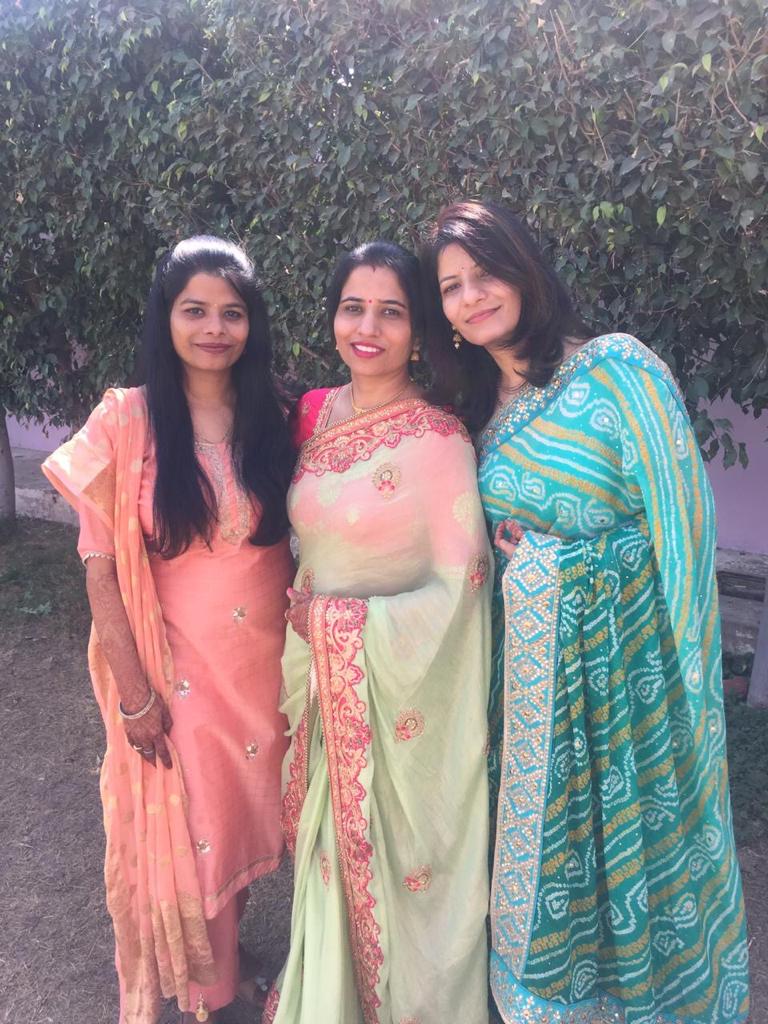
A plain version of a blue bandhej saree in georgette fabric
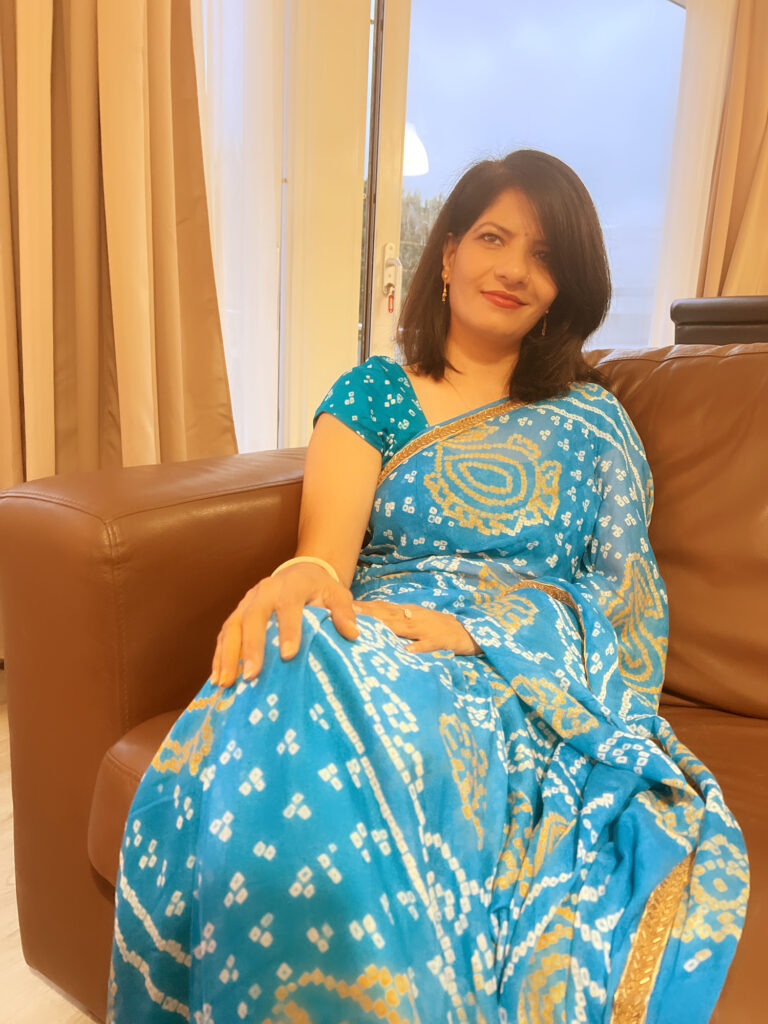
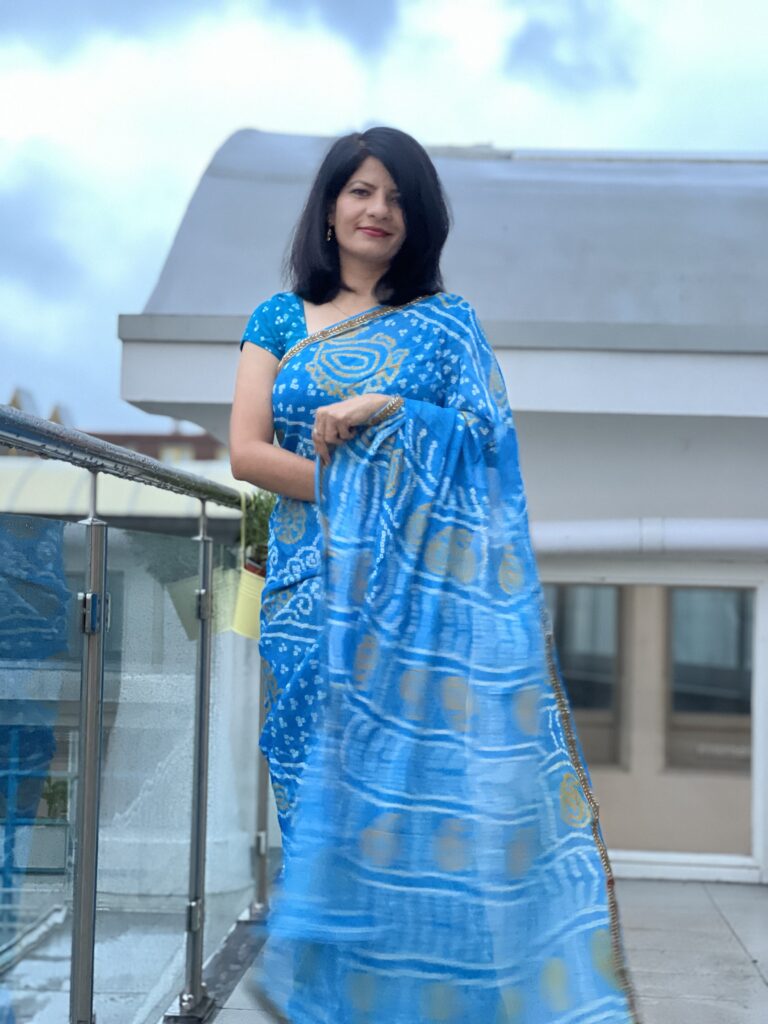
Magenta coloured bandhej duppatta paired with leharia kurta
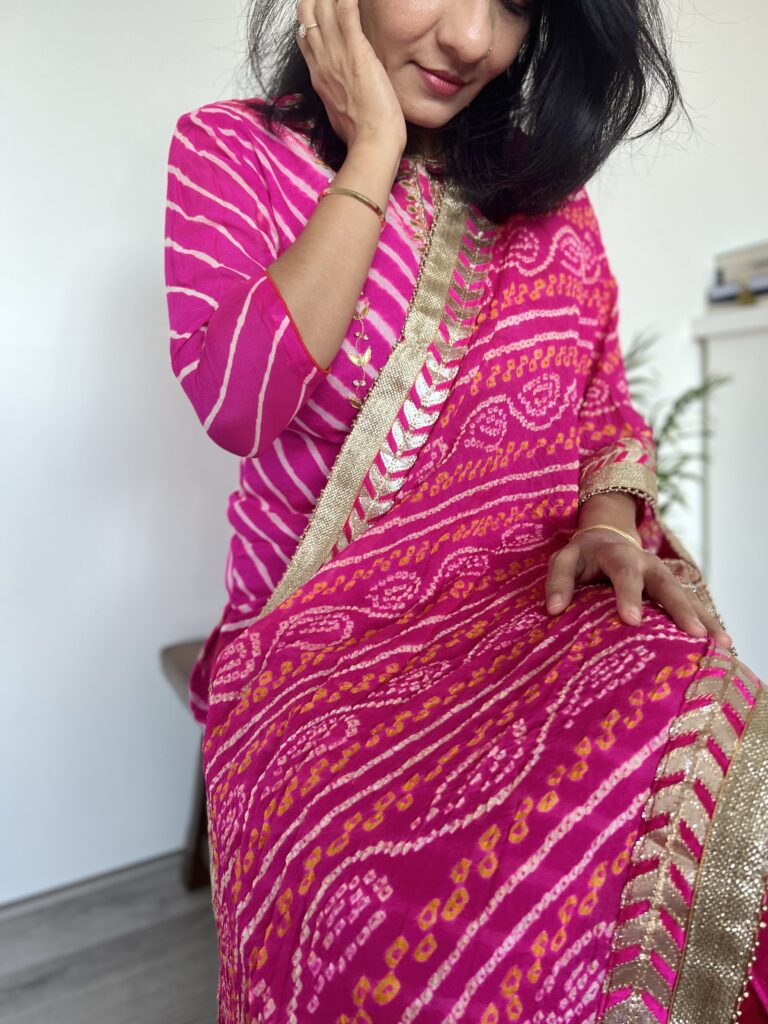
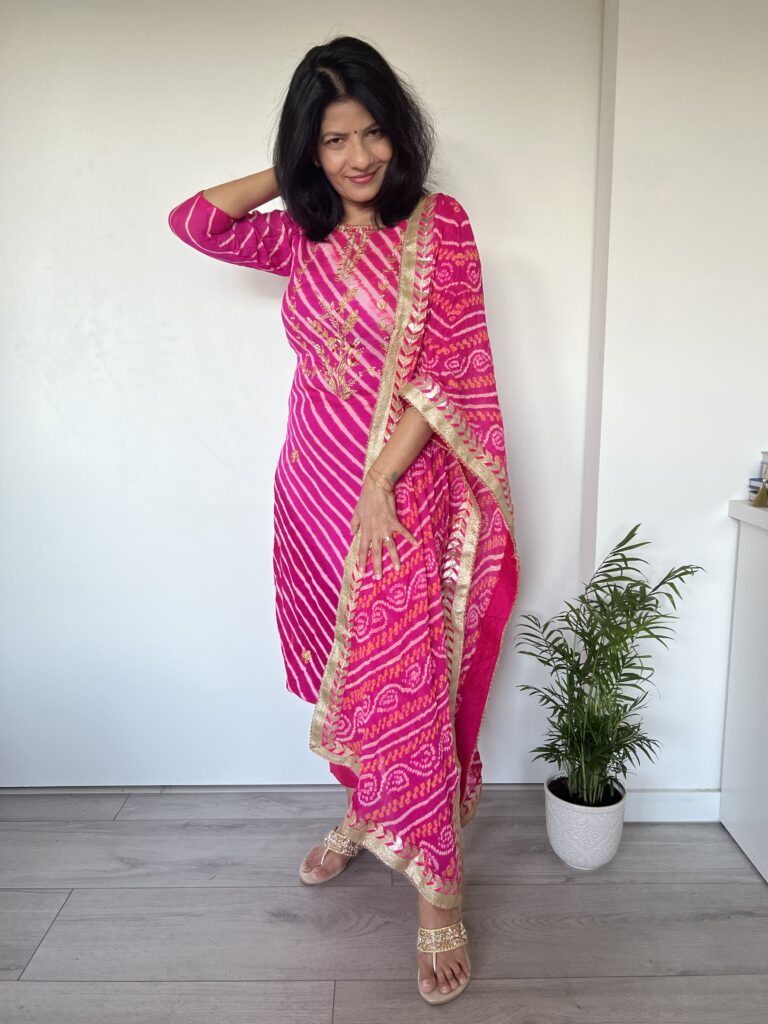
Chundari Safa (Turban) my husband wore for our Wedding
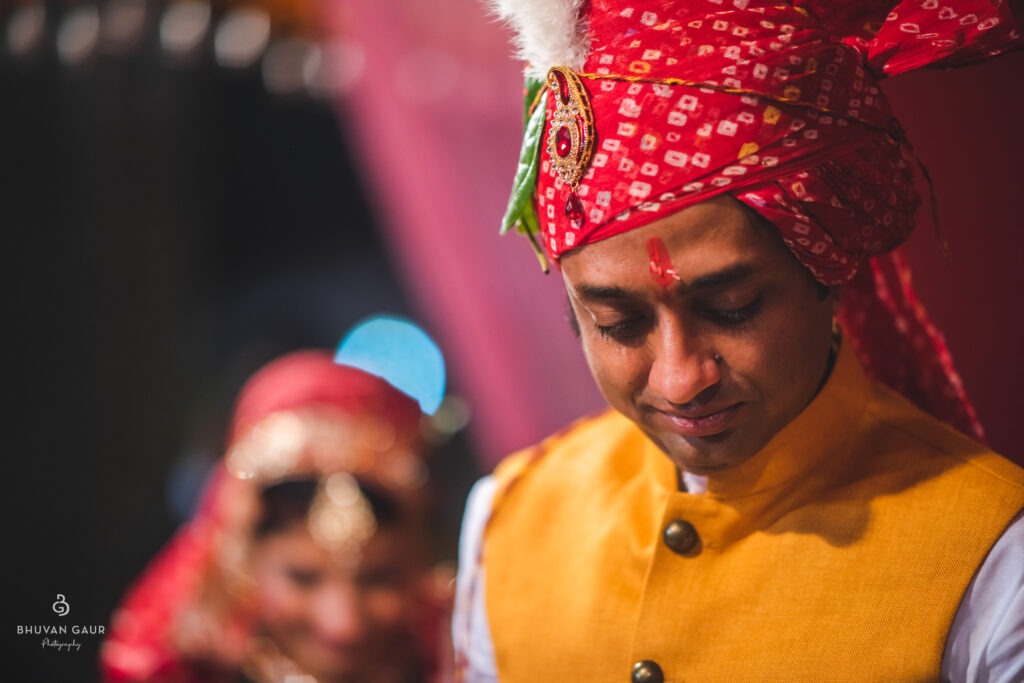
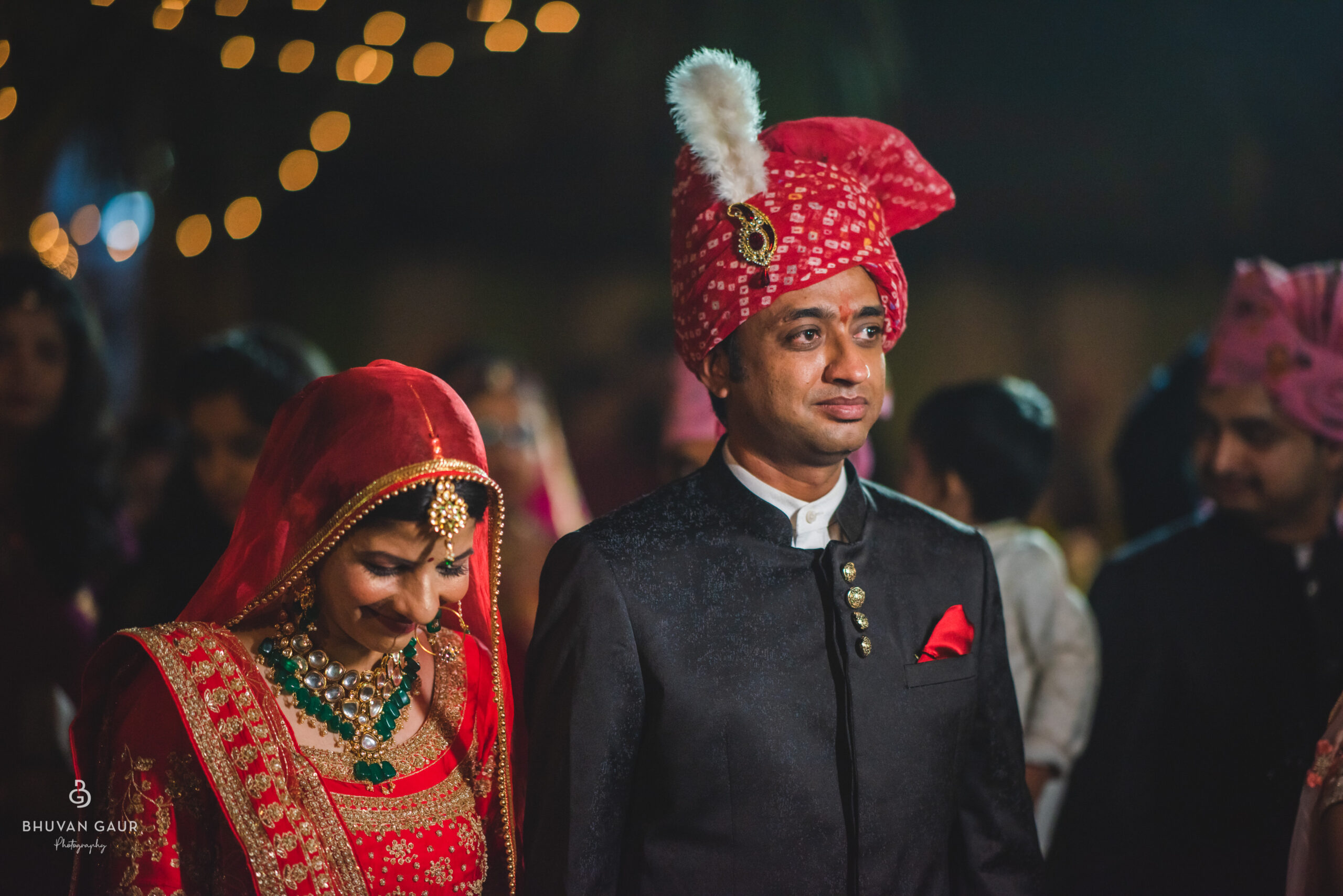
Chundari Saree I wore in our Wedding ceremony called “Phere”
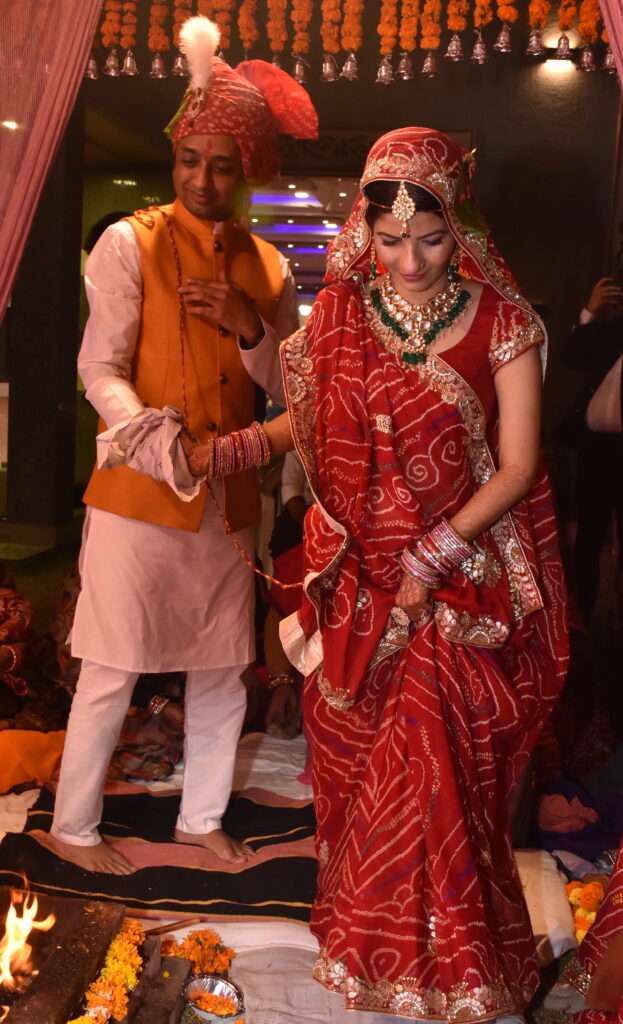
Where to shop for Bandhej in Rajasthan
If you are visiting Rajasthan or Gujrat, I recommend exploring the local markets. There is some amount of bargaining and haggling skills required in these places. However, you will be able to see the variety and various price range. You will find good markets in all the big cities in Rajasthan and Gujrat, I’ve mentioned below a few of these in Jaipur.
Some of the famous markets in Jaipur, Rajasthan are Bapu Bazar and Johari Bazar. When you enter these places, be prepared to see colourful shops of bandhej print products from duppatas, kurtas, sarees, lehengas to bags and other accessories. These markets are known for a huge variety of handicraft work of Rajasthan. Do visit places like Saraogi mansion on M.I. Road.
Some of the specific and legendary shops, where you will a wide variety of traditional bandhej outfits including Lehengas and Sarees.
- Ranas – 8, Narayan Singh Road, Rambagh, Jaipur, Rajasthan 302001, India
- Zari – 10/11, Narayan Singh Circle, Tonk Rd, Jaipur, Rajasthan 302004, India
- Vasani – D-69A, Jawahar Lal Nehru Marg, near Teen Murti Circle, Rambagh, Jaipur, Rajasthan 302004, India
Online options
These days there are various designers selling bandhej products online. Both Ranas and Zari have their websites, where you can shop and they ship internationally. Among other places, I have see a good seasonal collection on Instagram on Jaipuriadaah and The loom. You will also find good options on Etsy.
Can you tell I love Bandhej? 🙂 Well, I hope with this post I was able to win a few more people to this court. Happy Navratri and Happy Shopping! 🙂 Ciao until next post!
This post does not contain any affiliate links. Any products I mention, I’ve purchased myself and have been using these for years.
